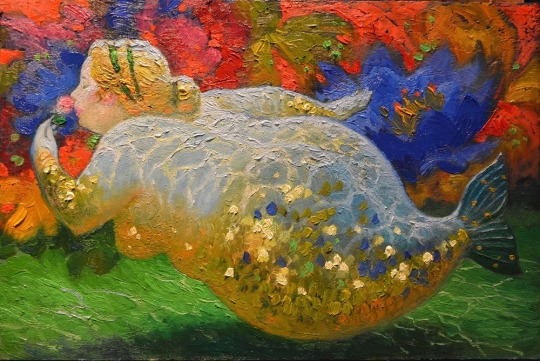Text

Cover for Dämonenkiller #132 - Der Ritter vom schwarzen Kreuz
by Vincente Segrelles
619 notes
·
View notes
Text
I’m revising the ruleset for this game and I’m still quite proud of its pared-down point buy system. It’s neato! Perfect for a standard array of +3, +2, +2, +1, 0, -1, as well as an average array of +1s across the board. It’s neato!
Point Buy is neat, but 27 points is a lotta points. Kinda makes my head spin yanno?
For the D&D style TTRPG I’m designing I tried to see if I could shrink the math down a bit:

Got it down to 12! The game doesn’t have ability scores or racial increases, but still! I quite like it.
55 notes
·
View notes
Text

'The Merry Wives of Windsor' illustration by Hugh Thomson, 1910
242 notes
·
View notes
Text

Stomp Stump – Huge plant, lawful neutral
Each month, my patrons decide on the huge monster of the month's creature type – this time, plant made it and I had the pleasure to work on the Stomp Stump. hope you enjoy it as well!
The Amphibious Witch Craft and many more huge Creatures are available over at my Patreon 🔮
85 notes
·
View notes
Text

Hand of Glory
Wondrous item, uncommon
This is the mummified hand of a hanged killer, cut from the corpse as it swung from a gibbet. A socket in the palm holds a candle, crafted using hair and fat from the killer’s remains.
Lighting the hand takes an action. It burns for 1 hour before its magic is spent. If the hand is snuffed out, deduct the time it burned in minutes (rounded up) from its total burn time.
While lit, the hand sheds bright light in a 10-foot radius. A creature that starts its turn in the candlelight must make a DC 13 Wisdom saving throw, unless it lit the hand. On a failed save, its speed becomes 0, held fast in the cold grip of an unseen hand. As an action, the creature can repeat the saving throw, ending the effect on a success.
The effect also ends for an affected creature if it isn’t in the candlelight. Once the effect ends, or if the creature succeeds on its initial saving throw against this effect, it is immune to the hand’s magic for 24 hours.
55 notes
·
View notes
Text

A lightsaber of autumn sun and falling leaves for @sexy-noble-6 🍁🍂
If you’re interested in getting a commission done yourself, DM me!
Or you can support me on Patreon for £1 and help me keep making art!
762 notes
·
View notes
Text
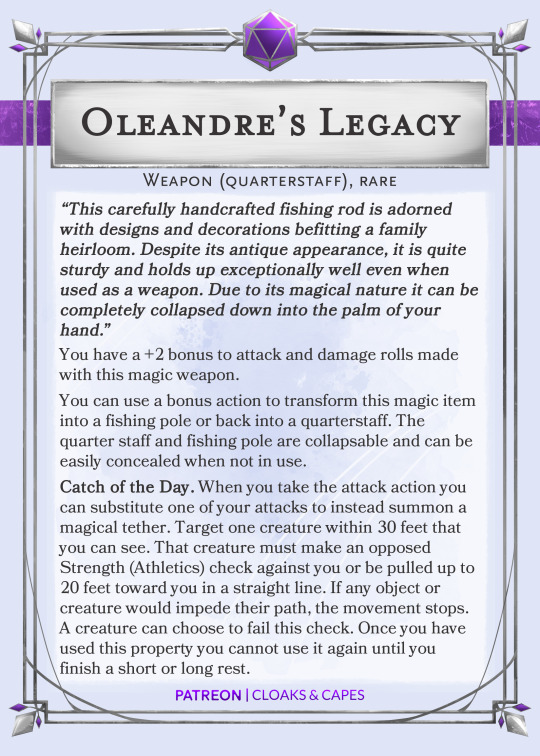
We are so excited to finally unveil our new card designs! Our artist Eotia has spent so much time and effort looking over what we love and what makes other creators work stand out and came up with something we think is just as sharp!
This magic item was actually created for one of the players in my Call of the Netherdeep game. A former noble with amnesia, this fishing pole was a gift from his father that he now uses as a Monk to fight off his Vampire Godmother.
Oleandre’s Legacy
Weapon (quarterstaff), rare
“This carefully handcrafted fishing rod is adorned with designs and decorations befitting a family heirloom. Despite its antique appearance, it is quite sturdy and holds up exceptionally well even when used as a weapon. Due to its magical nature it can be completely collapsed down into the palm of your hand.”
You have a +2 bonus to attack and damage rolls made with this magic weapon.
You can use a bonus action to transform this magic item into a fishing pole or back into a quarterstaff. The quarter staff and fishing pole are collapsable and can be easily concealed when not in use.
Catch of the Day. When you take the attack action you can substitute one of your attacks to instead summon a magical tether. Target one creature within 30 feet that you can see. That creature must make an opposed Strength (Athletics) check against you or be pulled up to 20 feet toward you in a straight line. If any object or creature would impede their path, the movement stops. A creature can choose to fail this check. Once you have used this property you cannot use it again until you finish a short or long rest.
Join us on Twitch every Mon\Wed\Fri to create new Homebrews and check out our Patreon for 524+ magic items, tokens, maps, and more.
41 notes
·
View notes
Text
39K notes
·
View notes
Text

New Idea: Loading screens for your D&D campaign
@haigs-hold wonder whats coming after this one!
90 notes
·
View notes
Text
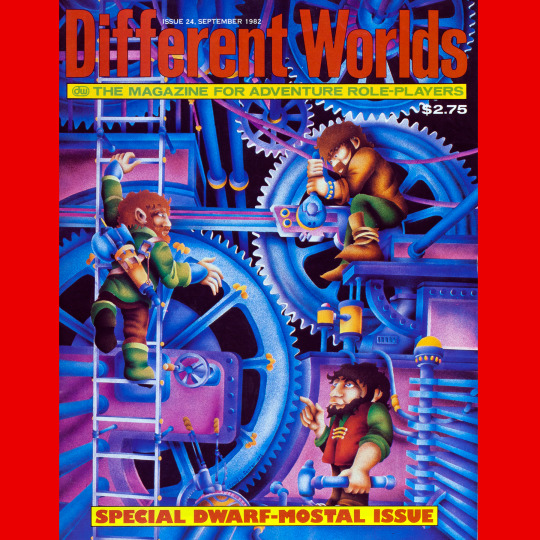
Different Worlds 24 (September, 1982). Brad W. Foster just airbrushing the heck out of some dwarves (I’m assuming that’s airbrush, but correct me if you think I’m wrong). I feel like the technique plus the color scheme makes this extremely of its moment.
73 notes
·
View notes
Text
Why Is Druid?
Say that like ‘where is Wizard Hut?‘
I love the 4e Druid. This is a marked change from how much I liked the 3e druid, or how often you might see me playing a druid in a Baldur’s Gate game. Back in 3rd edition, the druid, despite being very powerful, never really engaged me, in part perhaps because I was always trying to find something exploitative and powerful rather than merely accepting the juggernaut of a toolkit the game just left in the Player’s Handbook. You couldn’t get clever with the Druid, you just had to pick it up and use it, like some sort of society of creative anachronisms where one of the anachronisms available to the players was has gun. Valid, but hardly sporting.
The Druid in 4th edition is different. Wildly different. Weirdly different, and different in one of those ways that shows what I think of as a seam in the design between 4th and 3rd editions of D&D.
The Druid was one of 3rd edition’s great mistakes, a full spellcasting class with healer capacity to serve as a pinch-hitter healer in a group that wanted things a little more varied, addressing an enormously complex potential build from its earlier edition, 2e, and all in the process, resulting in some deeply confused mash up of abilities that attempted to address confusion with volume. The druid of 2e had a special unique set of rules compared to the Cleric — for example, at a certain level, you passed into a specific category of Druidic ability and now you were technically a Hierophant, and Hierophants had seven extra spells of every level. Of course there was a limited supply of Hierophants in the world, so there was a question of if you could level up if another one existed, and maybe there’s a one-in, one-out policy? First in, first fired?
Anyway, I can’t speak to how it played, but I am at least aware, on the edges of it, that the 2e druid was odd. It had a lot of things it could do, but much of how it worked, reading the books, seemed to be interesting but challenging to manage. You could wild shape, you could heal, you could cast utility spells, you could even fight with some melee weapons — personally, I didn’t see any of it worth it, because none of the things it could do it could do very well.
3e addressed this seeming difficulty by instead taking all those different options and bringing them all up to the same level. Wild Shape worked by checking traits of monster units, which meant that you weren’t limited to specific reinterpretations of animals and instead could do what a druid feels like it should do — you know, turn into an animal. The spells were rebalanced and shared across different classes, which meant that they tended to work in a more standardised way. Armour rules were aggregated, and weapons were made less terrible.
The result was that the 3e druid went from being ‘decent’ at a bunch of things to ‘good’ at everything it wanted to do. The problem of the druid then became about picking the thing you wanted to at every opportunity, and doing a good job of it — you’d have druids carrying wands of healing so they could dedicate their spell slots to more important tasks, like Flame Striking opponents, or messing up the battlefield with roots. You’d also see druids keeping the ‘best’ list of animals on hand, and every new monster book presented a new chance for druids to develop a new best form.
It also created the strange question of What does the druid do?
The answer was ‘everything.’
The 4e Druid, in comparison and contrast to these designs is something very different that touches, at best, on the periphery of what the 3e Druid could be. I mean it stands to reason, you can only ever touch on doing everything when something you’re working from is so powerful. 4e with its role system of Defender, Striker, Leader and Controller, and its reliable, reusable balance math suddenly was confronted with fitting an elephant into a shoebox.
How do you represent something busted that could do everything in the context of a new system that sought to explicitly prevent that? I joked when the game was new that the four roles were Defender, Striker, Leader and Miscellaneous. That any class too powerful, with too much stuff it could potentially do, got thrown to the Controller role as suggested by the first Controller we ever saw being the Wizard. Oh and back in Player’s Handbook 1, the Wizard had a few builds that were pretty ridiculously pushed — the pinball wizard, I’ll talk about it sometime — and that meant that it was easy to feel like the Controller Does Everything.
That impression diluted through experience, of course, and eventually it came to that while yes, the Controller sure has some Miscellaneous vibes, the core of what the Controller was there to do was to attack the enemy action economy. Nice and obvious to a non giga-nerd, right? Okay, how about this: The leader lets you do more things, the controller stops them from doing more things?
And into this space, they poured the druid.
It works beautifully, for my tastes; the druid needs to do lots of things to feel properly druidy, but you need to make sure the doing lots of things doesn’t unbalance the game. Controllers have the widest variety of things they can do and ways they can do them – inflicting status conditions, changing enemy position, preventing specific action types, making areas on the battlefield inaccessible, these are all ‘controllery’ things, and that means there’s a lot of different ways you can flavour them. The Invoker is most famous for making zones in the play space hard to deal with, the Wizard has a build that slides things all over the place, and the psion controls people with immense penalties to their damage rolls.
Obligatory pause where, while reading this aloud, for either Fox or I to comment on how amazing it is that Dishearten is an AOE power.
Anyway, the druid was designed to be a mode switcher class. That is, there are two ways a druid can do things. One is a melee controller that makes a single target’s life harder, the other is a ranged controller that makes a large group of enemies’ lives harder. This mode switching then adds a new element to the class that your powers can interact with, where you now have control powers that can add a mode switching element to them as well. This is your Wild Shape – you transform into some kind of nonspecific beast, which can use your Wild Shape powers. Each form has fewer powers to manage, and you can build your druid to specialise in one or the other or do a mix.
This lets the druid do the ‘a lot’ without letting them actually do everything. You have a lot of choices and a lot of ways to play with those pieces, but even just how often you use the mode switch is part of what the druid does to control the battlefield. When I first played a druid, it was not uncommon to start a fight out of wild shape, use the first turn to make some kind of area control power, then shift into wild shape for the rest of the fight kicking people into that area control power. There are druids builds that work like wizards and only ever shapeshift to get away from problems, and make a hit while scuttling away, or to sit on a specific type of problem. There were druids who focused on summoning monsters and using them as kind of turrets on the battlefield, positioning allies in a way that benefitted them around those summons.
Lone artillery combat encounters, where you have a bunch of stuff in front of a long-ranged attacker? Druids love those. Even at level 1, that artillery is spending their days completely stuck underneath a Fire Hawk power.
Problem is, of course, that if you want to do Everything doing a Lot is going to miss something. That was what led to the subclasses of the druid, the ones that added healer elements to the druid, because the druid back in 3e could do that. It added animal companions, because the druid back in 3e could do that. Now I don’t worry too much about these things because if I wanted an animal companion on my Druid, I’d take a theme for that, but also because these changes were introduced in an Essentials book.
Which is to say, they’re crap.
They’re not crap crap, like I try to defend Essentials as giving players a choice for simplified character builds, but in the specific case of the Essentials Druids, in order to work with the simplified choices, these Essentials druids with their animal companions and their healing powers have to look at all other Druid powers and not use them. The only use they get out of their animal companion is using the specific subset of powers that make them work, and that makes combat more samey. But again: That’s a thing you probably want if you want a simplified build.
Still, it gives rise to my favourite joke – I mean like, funny thing, not really a joke, there’s no subversion of reality or anything here – about the Healer Druid. See, every Leader in the game gets an encounter power, usable twice a combat at level 1, that heals an ally with a bonus. Every class gets their own version that lets them distinguish their class specifically and add some interesting detail that shows how this Leader differs from other Leaders.
The Healer druid build gets Healing Word.
The Cleric power.
Literally, the same power, same name, listed as a Cleric power.
Check it out on PRESS.exe to see it with images and links!
70 notes
·
View notes
Text

An illustration done for Little Wolves a table top role-playing game of folktales, werewolves, and fae queens.
Little Wolves is by @dinoberrypress ! If you’d like to learn more and help bring this realm to life, follow Little Wolves on backerkit!
635 notes
·
View notes
Text
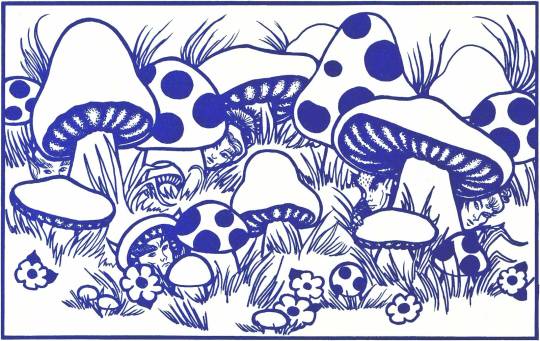
Fairy faces in the forest (AD&D 2e Dungeon Master's Guide, TSR, 1989)
215 notes
·
View notes
Text
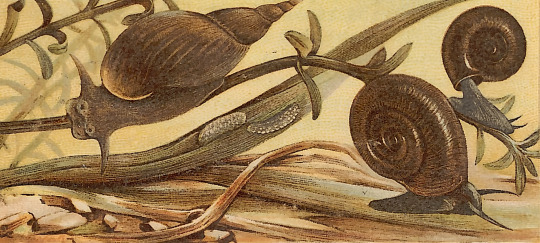
Lehrbuch der Tierkunde mit besonderer Berücksichtigung der Biologie - Reinhold von Hanstein - 1907 - via e-rara
173 notes
·
View notes
Text
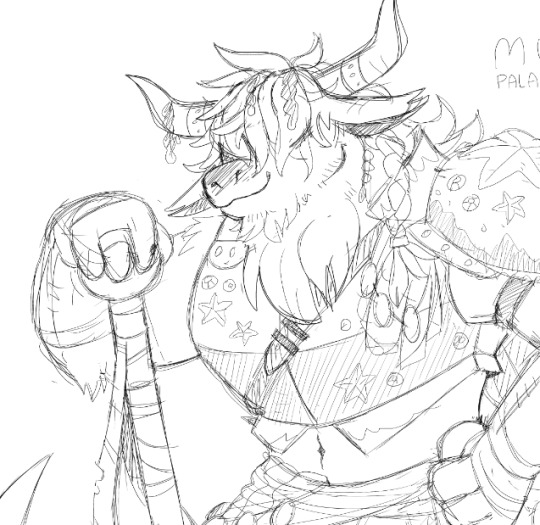

Sketching a new DnD character, in honour of #minomarch.
He's a highland cow because it's the best there's no competition even
Also...
Did a little sketch of that minotaur character, revealing his GASP... eye???? There's eyes under there???
755 notes
·
View notes
Text
Dungeonhack

So this is what I have been working on lately. I know some may roll your eyes at this, but here it goes: Dungeonhack is a homage to the tabletop games that ignited my passion for roleplaying. It cleverly fuses the story-driven and player-centric approach of PbtA games with the familiar and reliable framework of d20 fantasy games (D&D). As I delve into crafting the second edition of Chimera, I felt compelled to revisit Dungeonhack and share it with a wider audience, hoping to inspire more gamers that like crunchy systems to try PbtA games.
If you're interested in hearing more, just let me know, and I'll be happy to share additional details about the process.
49 notes
·
View notes

